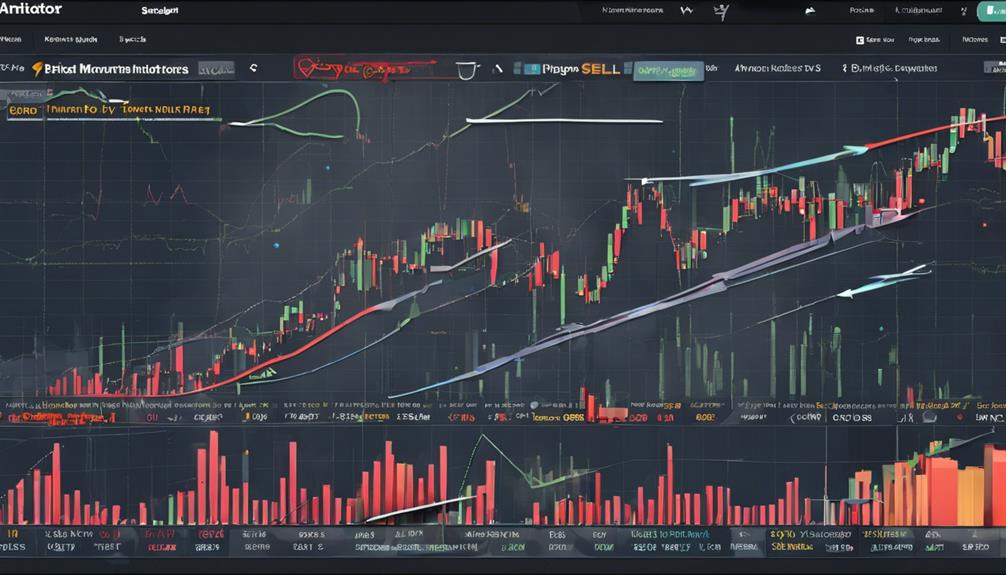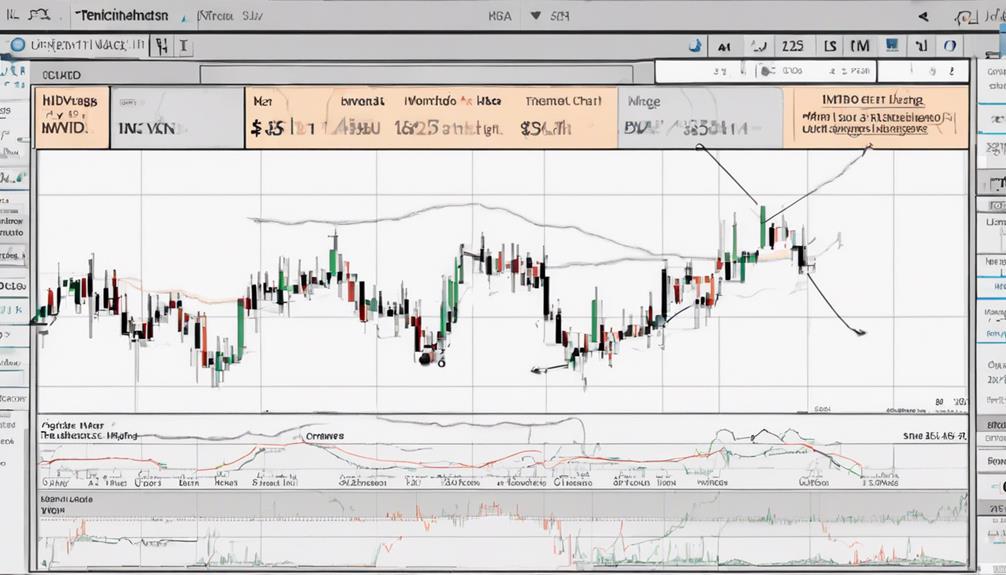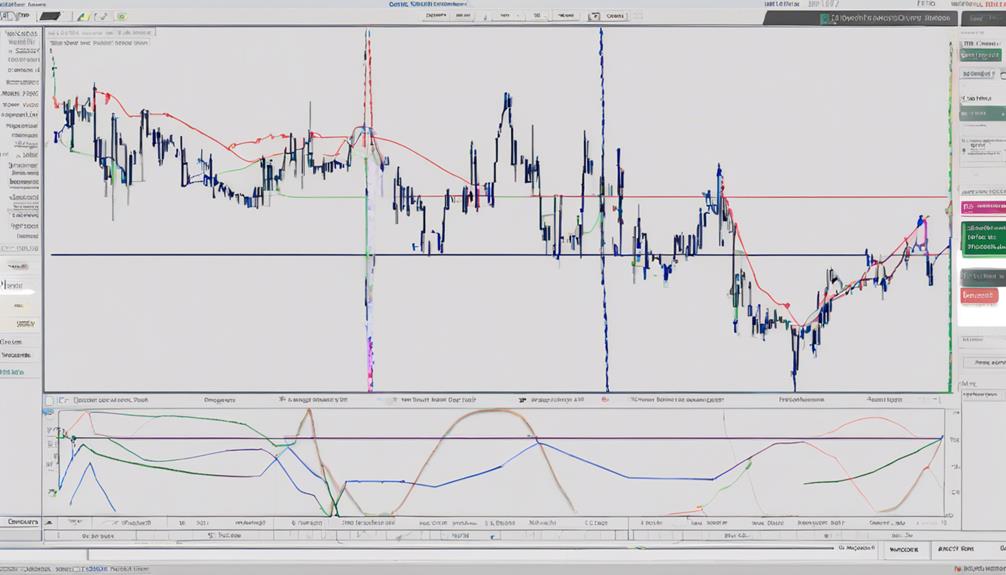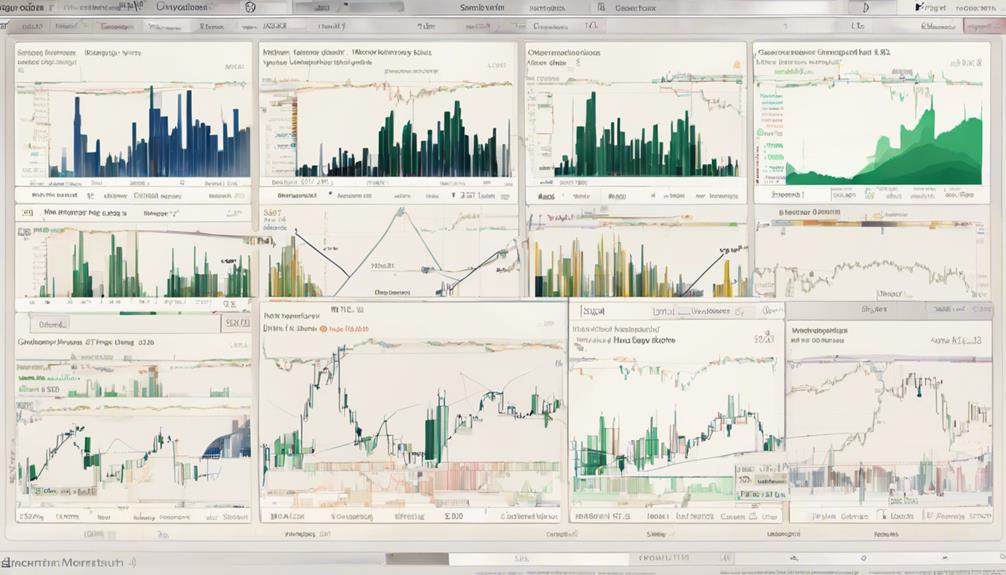So, you think you've got momentum indicators all figured out, but do you truly understand their intricate workings and nuances?
As you navigate the complex world of technical analysis, you may find yourself intrigued by the depths of interpretation these indicators offer. From deciphering market trends to anticipating potential reversals, the realm of momentum indicators holds secrets waiting to be unlocked.
Stay tuned to discover how these seemingly simple tools can unveil hidden insights into the intricate dance of stock price movements.
Understanding Momentum Indicators
When analyzing stock market trends, understanding momentum indicators is crucial for making informed trading decisions.
Momentum indicators, such as the Relative Strength Index (RSI), track the rate of price change in a stock over a period. By comparing current and past closing prices, these indicators provide insights into a stock's momentum, helping investors pinpoint potential entry and exit points.
Plotting these values on a stock chart visually represents the stock's momentum, offering valuable signals for traders. One key signal to watch for is the crossing of the zero line on a momentum indicator, indicating possible trading opportunities.
To enhance the effectiveness of these indicators, investors often apply filters like price patterns or market trends to reduce the number of signals and increase accuracy.
Advantages of Using Momentum Indicators

Momentum indicators offer traders valuable insights into shifts in buying or selling momentum in stock prices, aiding in confirming price action strategies and assessing trend strength.
The Relative Strength Index (RSI) can signal overbought or oversold conditions, guiding trading decisions effectively.
By incorporating momentum indicators alongside other technical tools, traders enhance the accuracy of their market analysis, enabling more informed trading decisions.
These indicators are instrumental in identifying potential trend reversals, providing traders with critical information to act upon.
Utilizing momentum indicators in technical analysis empowers traders to navigate market fluctuations with more confidence and precision, ultimately improving the overall effectiveness of their trading strategies.
Interpreting Divergence in Momentum Indicators

Interpreting divergence in momentum indicators reveals critical insights into potential trend reversals in the market.
- Bullish divergence indicates potential upward price movement despite downward momentum.
- Bearish divergence suggests possible downward price movement even as momentum shows strength.
- Traders use divergence signals to anticipate trend reversals in the market.
- Identifying divergence can help traders make informed decisions about entry and exit points in their trades.
Understanding these divergence patterns allows traders to align their strategies with market trends effectively, enabling them to capitalize on opportunities and mitigate risks at key turning points.
Exploring Popular Momentum Indicators

Exploring popular momentum indicators allows traders to gain valuable insights into market trends and potential price movements based on specific technical analysis tools.
The Relative Strength Index (RSI) helps identify overbought or oversold conditions by comparing recent gains and losses.
Moving Average Convergence Divergence (MACD) utilizes two lines to signal trend changes through crossovers.
The Average Directional Index (ADX) assesses trend strength, indicating the power of price movements.
Rate of Change calculates price percentage changes over a specified period, offering insights into price movement speed.
These indicators, along with moving averages and trade signals, provide traders with essential information to gauge market dynamics and make informed trading decisions based on trend strength and potential reversal points.
Final Insights on Momentum Indicators

With momentum indicators like RSI and MACD playing a crucial role in analyzing stock price strength and potential trend reversals, traders can gain valuable insights into market dynamics for informed decision-making.
When interpreting these indicators, remember that RSI values above 70 signal overbought conditions, while values below 30 indicate oversold conditions.
MACD's signal line and indicator line crossovers are pivotal in signaling trend reversals and shifts in momentum.
Additionally, the CCI helps identify excess buying or selling pressure by measuring price variation relative to the statistical mean.
Understanding these indicators is essential for making sound trading decisions in technical analysis.
How Can Momentum Indicators in Technical Analysis Apply to Crypto Trading?
When it comes to crypto trading, understanding how momentum indicators in crypto trading work can make a significant difference in your success. These indicators track the strength and speed of a price movement, helping traders identify potential buy or sell signals in the volatile world of cryptocurrency trading.
Frequently Asked Questions
How Do You Read a Momentum Indicator?
To read a momentum indicator, look for crossovers above or below the zero line. These points can indicate entry or exit signals. Pay attention to overbought or oversold conditions. Understanding these signals is vital for informed trading decisions.
What Is the Best Technical Indicator for Momentum?
When looking for the best technical indicator for momentum, consider the Moving Average Convergence Divergence (MACD). Its blue and red lines crossing signal trend changes, helping you identify strong momentum shifts effectively.
How Do You Interpret Momentum?
To interpret momentum effectively, you analyze the rate of change in a stock's price over a specific period. This assessment helps you gauge the price trend continuation, identify entry or exit points, and spot overbought or oversold conditions.
What Is the Best Momentum Divergence Indicator?
When searching for the best momentum divergence indicator, consider Relative Strength Index (RSI). RSI identifies potential trend reversals by measuring speed and change of price movements. Values over 70 suggest overbought conditions, under 30 indicate oversold.
Conclusion
In conclusion, mastering momentum indicators in technical analysis is like having a crystal ball for predicting market movements. These tools provide invaluable insights into price momentum, helping you stay ahead of the curve and make strategic trading decisions.
By understanding divergence and utilizing popular indicators like MACD, RSI, and ADX, you can navigate the market with confidence and precision. So, embrace the power of momentum indicators and unlock your potential for success in trading.
